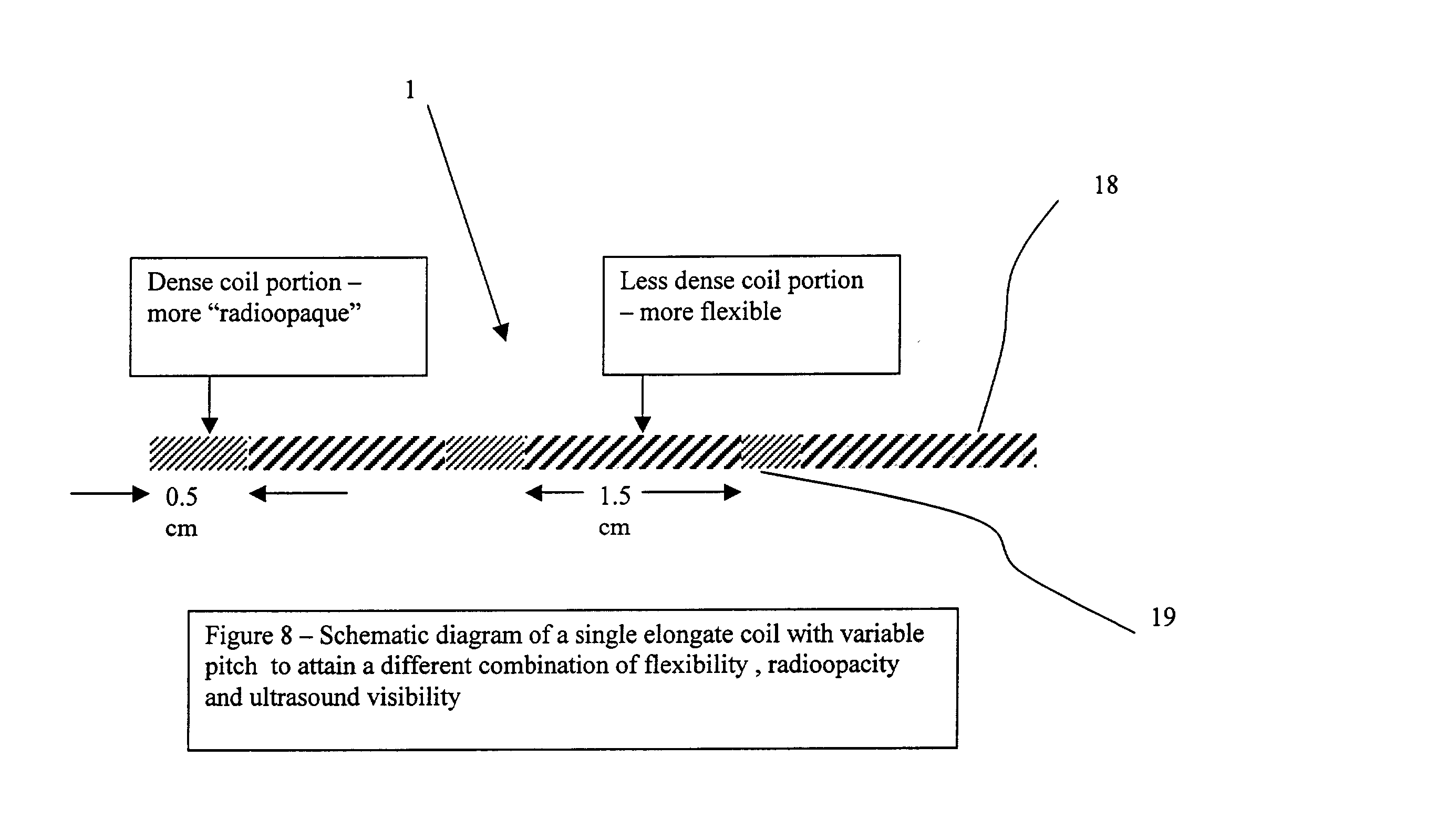Elongated markers for soft tissue volume identification
a soft tissue volume and marker technology, applied in the field of elongated markers for soft tissue volume identification, can solve the problems of not being able to follow the change of shape of said organ, markers are of no use, diagnostic tools cannot distinguish between malignant and benign tumors,
- Summary
- Abstract
- Description
- Claims
- Application Information
AI Technical Summary
Benefits of technology
Problems solved by technology
Method used
Image
Examples
example 2
[0046] Designed primarily for diagnostic x-ray, fluoroscope or ultrasound
2 Material Platinum Helix Outer Diameter 500 .mu.m Helix Inner Diameter 350 .mu.m Circular wire 75 .mu.m diameter Wire Pitch 90 + / - 9 .mu.m
example 3
[0047] Primarily designed for Portal Imaging (high energy x-rays)
3 Material Gold Helix Outer Diameter 2.0 mm Helix Inner Diameter 1.2 mm Wire Diameter 0.4 mm Wire Pitch 0.48 + / - 0.08 mm
[0048] The lateral flexibility obtained by using a coil according to the invention is very high. This flexibility is easily determined by measuring the droop of a length of helical coil fastened horizontaly from one end. The other end droops in response to its own weight. It was determined that a coil made of stainless steel, having an outer diameter of 350 .mu.m, a rectangular cross section wire of 200 .mu.m by 50 .mu.m, a 220 .mu.m pitch, and a free length of 35.5 mm, droops by 2.9 mm.
[0049] FIG. 8 represents a preferred embodiment of a coiled marker 1, having sections of different pitch. Sections of high pitch 18 (less dense coils) provide a good flexibility, while sections of low pitch 19 (dense coils) provide good x-ray and ultrasound visibility.
[0050] FIGS. 9a-9d represent images of the marker c...
PUM
 Login to View More
Login to View More Abstract
Description
Claims
Application Information
 Login to View More
Login to View More - R&D
- Intellectual Property
- Life Sciences
- Materials
- Tech Scout
- Unparalleled Data Quality
- Higher Quality Content
- 60% Fewer Hallucinations
Browse by: Latest US Patents, China's latest patents, Technical Efficacy Thesaurus, Application Domain, Technology Topic, Popular Technical Reports.
© 2025 PatSnap. All rights reserved.Legal|Privacy policy|Modern Slavery Act Transparency Statement|Sitemap|About US| Contact US: help@patsnap.com



